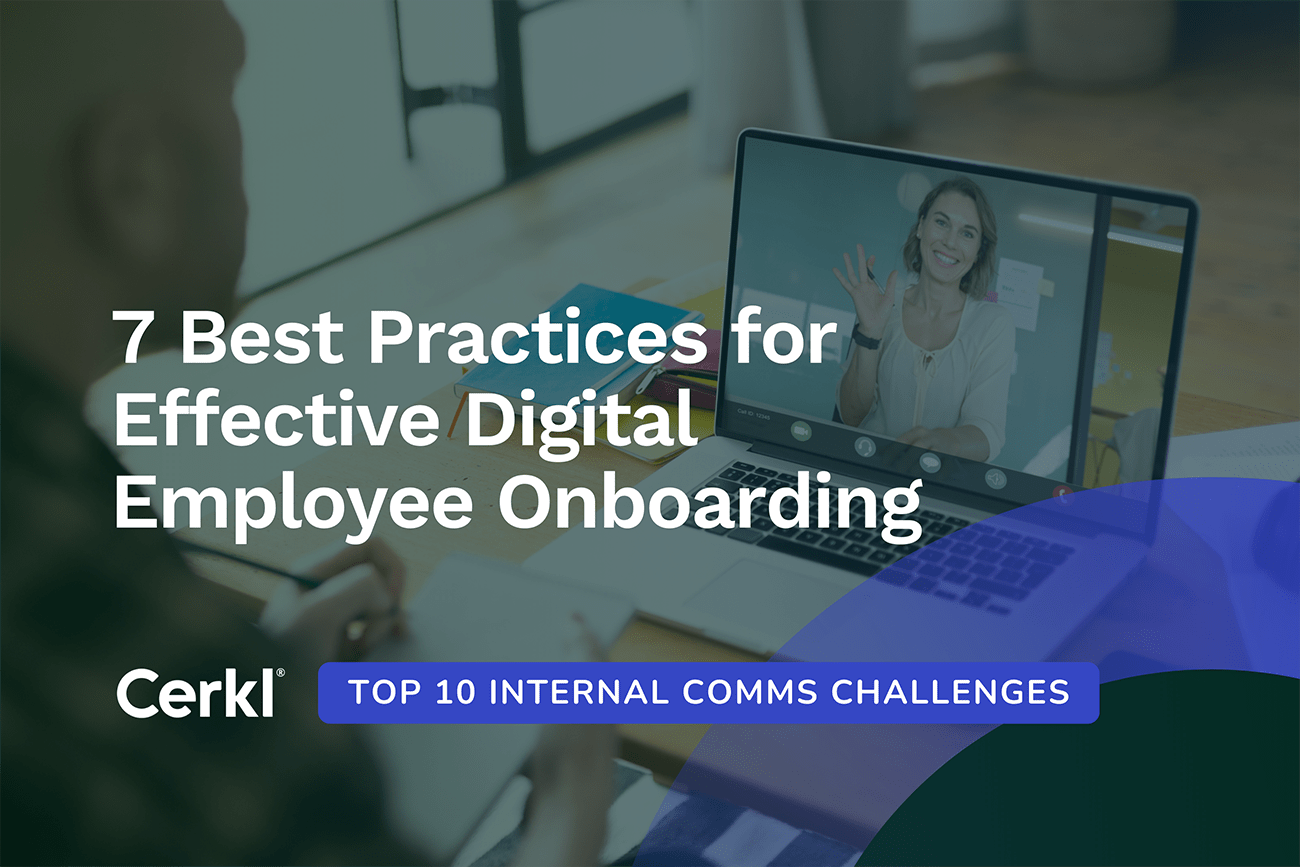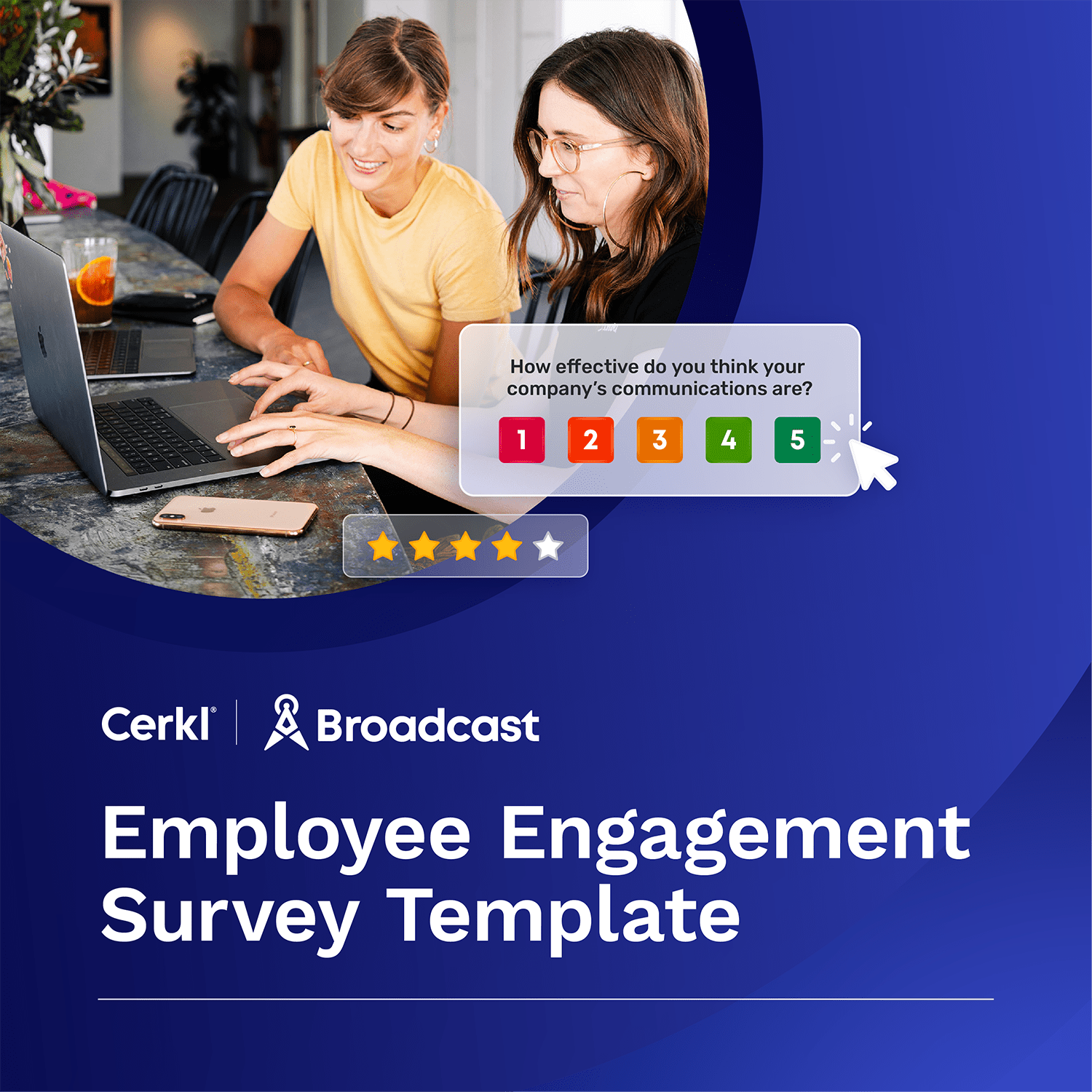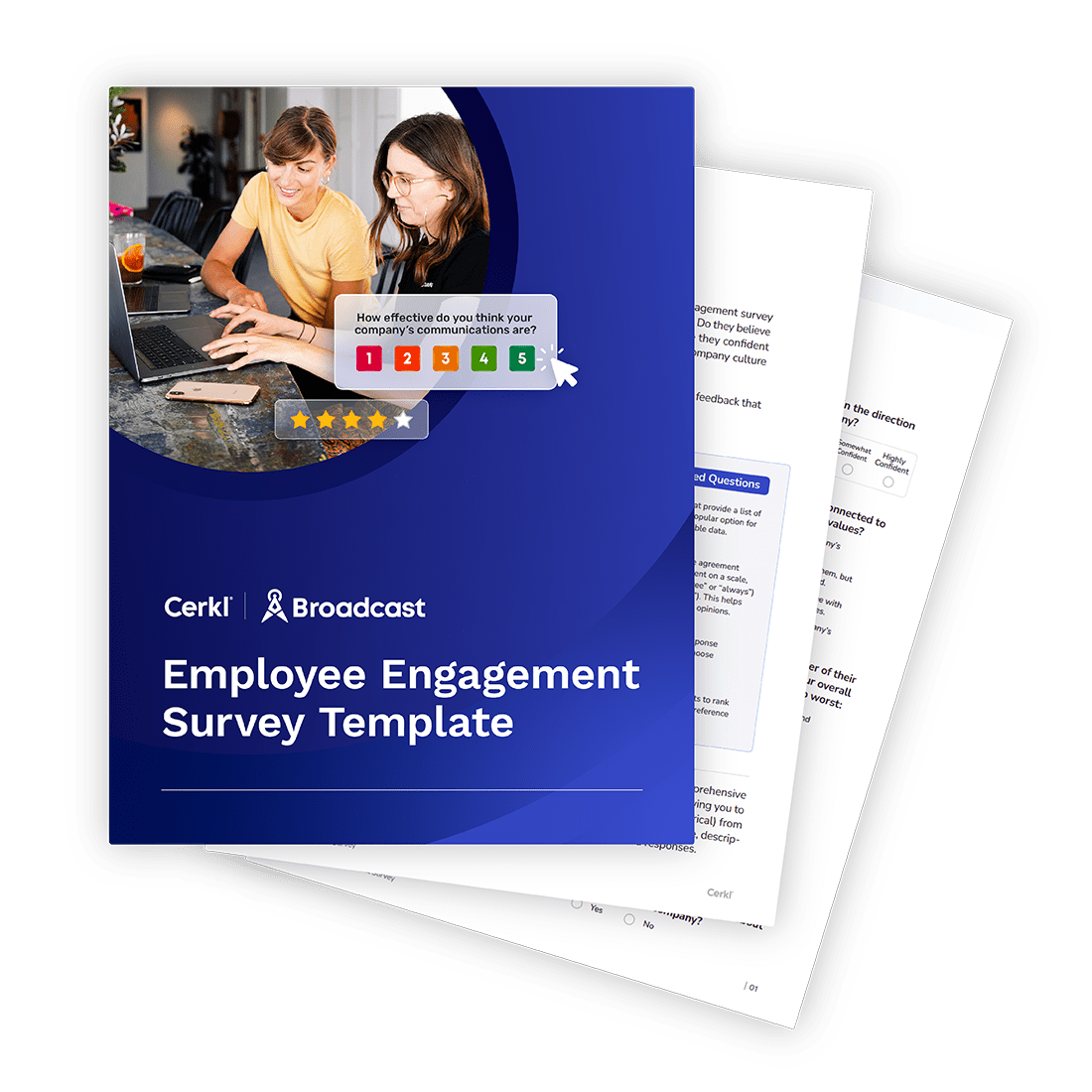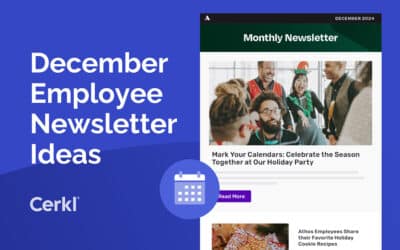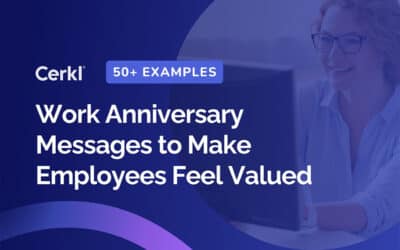A new employee’s first few weeks can be overwhelming. There is a huge amount of learning they are expected to do to be able to successfully carry out their new tasks and responsibilities. From HR policies, and procedures, getting to know their new team members, understanding the internal landscape at the organization, and understanding their role and expectations, it’s a veritable minefield.
Table of contents
For managers and team leaders, trying to get a new employee’s attention during these first few weeks can be difficult. It’s a common pain point, and an incredibly important one too.
If you’ve missed the previous posts we’ve published about the workshop we held at 11th Annual Strategic Internal Communications — West Conference in San Francisco in February, you’ve missed a lot. This is the seventh post in a series of ten, and it was born out of the challenges and pain points Maddy Rieman, Head of Customer Success at Cerkl, identified during the workshop. It focuses on the challenge organizations have to effectively onboard new employees.
As Maddy says, it can be overwhelming for new recruits who are anxious and nervous. But organization leaders have the perfect opportunity to turn these challenges into feelings of security, clarity, and togetherness for new employees.
According to the latest benchmarking data available from the Society for Human Resource Management (SHRM), the average cost per hire is nearly $4,700. SHRM also states that the cost to hire a new employee can rise up to three or four times in terms of an employee’s salary, depending on position.
More than two-thirds of 800 business leaders surveyed by the Harvard Business Review in 2022 stated that filling available roles is critical to their organization’s future competitiveness. Over 95% of respondents ranked hiring and retaining people as one of their top three objectives.

What is Digital Employee Onboarding?
Digital employee onboarding is the process of welcoming new hires online using digital tools. Like on-site onboarding, it helps them get familiar with their roles and company culture and find a fit in their new work role. By digitizing onboarding, new hires can complete tasks and access information efficiently, at their own pace, streamlining the process.
Typically the onboarding process is carried out utilizing the user’s mobile device, with companies striving to make the process as user-friendly and efficient as possible.
Before onboarding starts though, there are several steps that new employers need to take. For example, they need to verify identification to ensure that new employees are who they say they are when they sign into the company. Typically this involves document verification where images of employee’s ID documents (including passports or driver’s licenses) are validated. Facial recognition is also used to confirm that the pic on their ID is actually the same person. Many companies also do security checks.
Usually there will be a need for data collection of contact details and so on. Agreements and disclosures will also need to be signed. Then the onboarding process can begin. This is commonly how the digital onboarding process works:
- The organization prepares digital resources like access to systems and training materials.
- New hires learn about the company through online orientation sessions and videos.
- They take online courses to learn job-specific skills at their own pace.
- Paperwork, like tax forms, is completed electronically with e-signatures.
- New employees communicate with their new team using messaging and video tools.
- They can give feedback and get support online if needed.
- HR and managers track their progress and make improvements as needed.
Why Is it Important to Provide Great Digital Onboarding Experiences?
On a very basic level, digital employee onboarding streamlines the signup process by negating the need for traditional methods that typically involve physical paperwork and in-person visits.
There are a lot of employee transitions happening right now. With mergers, acquisitions and overall employee movement increasing across the globe, the idea of effectively onboarding employees is something that is more important than ever before.
What Research Shows
Quoting SHRM, BambooHR states that 31% of employees quit their jobs within the first six months. So, they surveyed employees who quit and found that:
- 23% said they didn’t get clear guideline relating to their responsibilities
- 23% said training wasn’t effective
- 17% said if people had been more friendly they might have stayed
BambooHR also found that 80% of employees who had a positive onboarding experience are three times more likely to feel a strong commitment to their organization.
On the other hand, Qualtrics warns that while a strong onboarding process improves the retention of new employees by 82%, 88% of organizations don’t onboard new hires well. Liz Pavese-Kaplan, principal consultant of employee experience for Qualtrics says onboarding new employees is “a make or break opportunity for organizations.” Cecelia Herbert, principal behavioral scientist at Qualtrics explains:
‘‘The new hire experience is a critical journey within the broader employee journey – one that sets the path of success for employees. Organizations must take stock of the important moments in the onboarding journey, finding ways to measure and improve them. It’s no longer just about ticking the boxes on an onboarding checklist.”
Cecelia Herbert

Psychologist Elin Frögéli from Karolinska Institute in Sweden investigated the effectiveness of formal onboarding programs and practices for new professionals. In her paper, Effectiveness of formal onboarding for facilitating organizational socialization: A systematic review she states that organizations that are more active and more effective in onboarding new employees:
- Experience a 2.5 improvement in revenue growth
- Achieve a 1.9 times greater profit margin
Ultimately, her finding was that organizations should prioritize on-the-job training as a strategy to facilitate organizational socialization. Furthermore, “structured and supported on-the-job training is the most effective onboarding strategy for supporting new professionals.”
Challenges for Remote Workers Undergoing Digital Onboarding
Ironically, digital employee onboarding can be extra challenging when it involves remote workers.
We’ve already said that the onboarding process often results in new employees feeling overwhelmed and needing support. Without the ability to easily pop over to a co-worker’s desk or ask questions in person, remote workers might feel more isolated during this initial period. Also, they might miss out on informal interactions and social aspects that can happen naturally in an office setting. This can make it harder for them to feel connected to colleagues and company culture.
Ultimately, digital employee onboarding relies heavily on clear and consistent communication. Remote workers may need to be more proactive in seeking clarification or reaching out with questions compared to someone who can easily address issues in person.
Nevertheless, these challenges can be countered with careful planning and the right digital onboarding tools. For instance, incorporating video conferencing, online social events, and buddy programs for remote workers can help bridge the gap and make the digital onboarding experience a good one.
Maddy’s Best Practices for Effective Digital Employee Onboarding
For impactful digital employee onboarding, it’s important to focus on clear communication and a user-friendly experience. Break down information into bite-sized modules and utilize engaging tools like videos and interactive content. It’s vital to provide multiple channels for new employees to ask questions and connect with colleagues — in person or remotely. This will ensure a smooth transition and set them up for success in their new role.
With this in mind, here are Maddy’s best practices for effective digital employee onboarding.
#1 Shape the Experience from Day 1
Giving employees the opportunity to feel a part of the new organization, starting with their very first interaction with their inbox or any new system, is crucial.
#2 Create a Simple One-Pager
Create a simple one-page document that outlines all the systems an employee will have access to. The document should include what systems are used for, and what they are not used for. Also, it’s a good idea to itemize guidelines on the responsibilities each employee has — a requirement BambooHR found is commonly lacking and leads to nearly a quarter of employees quitting.
#3 Provide Access to Company Tools and Systems
Maddy warns that new employees often don’t get immediate or appropriate access to the systems they need to perform their duties. When this happens, they might take their experiences from other organizations and incorrectly assume the use of specific tools within the wrong context. It’s not a good way to start a new job.
#4 Don’t Think of Employee Onboarding as a One Time Event
Onboarding shouldn’t be something that happens during the first days, weeks, or even months of an employee’s tenure. It’s important to constantly ensure employees are “onboarded” throughout their time at a company. This allows employees to be reminded about policies and procedures, and keeps them feeling more connected to the organization
#5 Don’t Leave Everything to HR
Onboarding isn’t just an HR function. It takes an army to help onboard a new employee, ensure people managers, and function leads are well-equipped to assist new employees throughout their first few weeks on the job.
To get the process right, it’s prudent to roll out onboarding training for people managers. In any case, be sure to give them quick, relevant resources to assist on the ground floor.
#6 Make Time to Collect New Employee Feedback
It is vital to constantly get feedback from employees throughout their time at an organization. Since you need to know how they feel as soon as possible, Maddy suggests getting them to fill out a one question pulse survey every day throughout their first three weeks. For instance, you could ask them how they feel today on a scale of one to ten. You could also ask if there are any challenges they are struggling to come to terms with, or if they are unhappy with certain processes.
Whether it’s in the form of a new employee survey or simple pulse surveys, try and collect as much information about what’s working and what’s not working so you can help shape the program in the future.
#7 Track Responses to Better Understand the Digital Employee Onboarding Experience
Once you receive feedback, track the responses to identify points made throughout the digital onboarding process that may seem overwhelming, scary, or hopefully seamless for each new employee. This should even allow you to get a better understanding of the individual departments, locations, cost centers and so on, and give an indication of how the digital onboarding experience feels across those different employee segments.

Most Effective Digital Onboarding Tools
There is a wealth of digital onboarding tools available to organizations, their internal communicators, and HR departments. These range from welcome emails and employee onboarding surveys to learning management systems and video conferencing tools.
Welcome Emails
A welcome email is a common digital onboarding tool used to greet new users or employees when they sign up for a service or join a company. It typically includes a warm welcome message, introduction to the platform or organization, and instructions on next steps. It may sometimes include links to helpful resources or tutorials.
Welcome emails can be automated to ensure timely delivery to new sign-ups. Ideally they should be personalized.
Digital Employee Onboarding One-Pager
As described above, these are documents that are designed to guide new employees through the digital onboarding process at a company. An on-boarding one-pager includes various sections addressing key aspects of the onboarding journey. Typically, these include accessing company resources, completing paperwork, attending orientation sessions, connecting with the team, accessing support resources, providing feedback, and staying connected. Note that because it is a one-pager, information should be brief. You can elaborate later.
Employee Onboarding Checklist
An onboarding checklist is a simple yet effective tool used to organize and track the various tasks and activities involved in the onboarding process. It usually includes a list of items such as paperwork completion, training sessions, setting up equipment or accounts, introduction to team members, and other essential steps new employees will need to take.
Onboarding checklists help HR ensure that no important steps are overlooked during the onboarding process, providing a structured approach for both the new employee and onboarding team.
Learning Management Systems
These platforms deliver training content online, allowing new hires to learn at their own pace, and revisit modules as needed.
Additionally, interactive content with quizzes and gamification elements can make learning more engaging and help new employees retain information better.
Video Conferencing and Collaboration Tools
These tools allow for virtual introductions, team meetings, and one-on-one sessions with managers, fostering a sense of connection despite physical distance.
Employee Onboarding Survey
An employee onboarding survey is an invaluable tool used to gather feedback from new employees about their onboarding experience. This survey typically includes questions about the effectiveness of the onboarding process, clarity of instructions provided, helpfulness of training materials, and overall satisfaction with the experience.
The feedback collected from these surveys can be used to identify areas for improvement in the onboarding process and enhance the overall employee experience.

How Can Cerkl Help to Automate the Digital Onboarding Process?
Cerkl Broadcast is designed to be a centralized hub for all communication assets. Its omnichannel capability is particularly effective because it enables employees to dynamically receive communications in the channels they prefer to use. This is something you should ascertain from new employees during the digital onboarding process.
In terms of automating the digital onboarding process, one of Broadcast’s many standout features is News Digest. Clients who utilize this feature are able to send welcome emails immediately upon the addition of a new employee. These welcome emails and News Digest experience are specific for a “new employees” segment and are personalized. This sets the tone for the experience they will come to expect from their new company.
During the employee’s Cerkl Broadcast onboarding, they can be set up to auto-track the most effective time to deliver communications to them based on day, time, and frequency of communications delivered to their inbox. They can also set their own explicit categories of interest, define the language they prefer their News Digest to be automatically translated into — over 104 options — and even the overall format, look and feel of the message.
The platform also enables the ability to add pulse surveys and resend the welcome email to any employee who hasn’t already personalized their experience to the fullest extent.
What’s Next?
How effective is the onboarding process you use in your organization? There’s one super-easy way to find out. You can use our free audit to map company wide channels and mediums and see if your onboarding channels are effective.
Download Your Free Strategic Internal Communications Audit Template Now
Alternatively, or in addition, you can undertake a survey that will help you understand your new employees. We are offering you access to our specially curated employee engagement survey to do this, free of charge.
FAQ
Digital employee onboarding replaces traditional paper-based processes with online tools. This streamlines the process for new hires, allowing them to complete tasks and access information at their own pace.
A digital onboarding process or system is a software platform designed to manage the entire new employee experience online. It automates tasks, provides a central location for documents, and tracks progress.
You can digitize employee onboarding by using online forms, e-signatures, video tutorials, and learning management systems. This eliminates paper trails, saves time, and creates a more engaging experience for new employees.
An example of digital onboarding is a new employee receiving a welcome email with login credentials for a company portal. The portal allows them to complete paperwork electronically, watch training videos, and connect with colleagues virtually.
